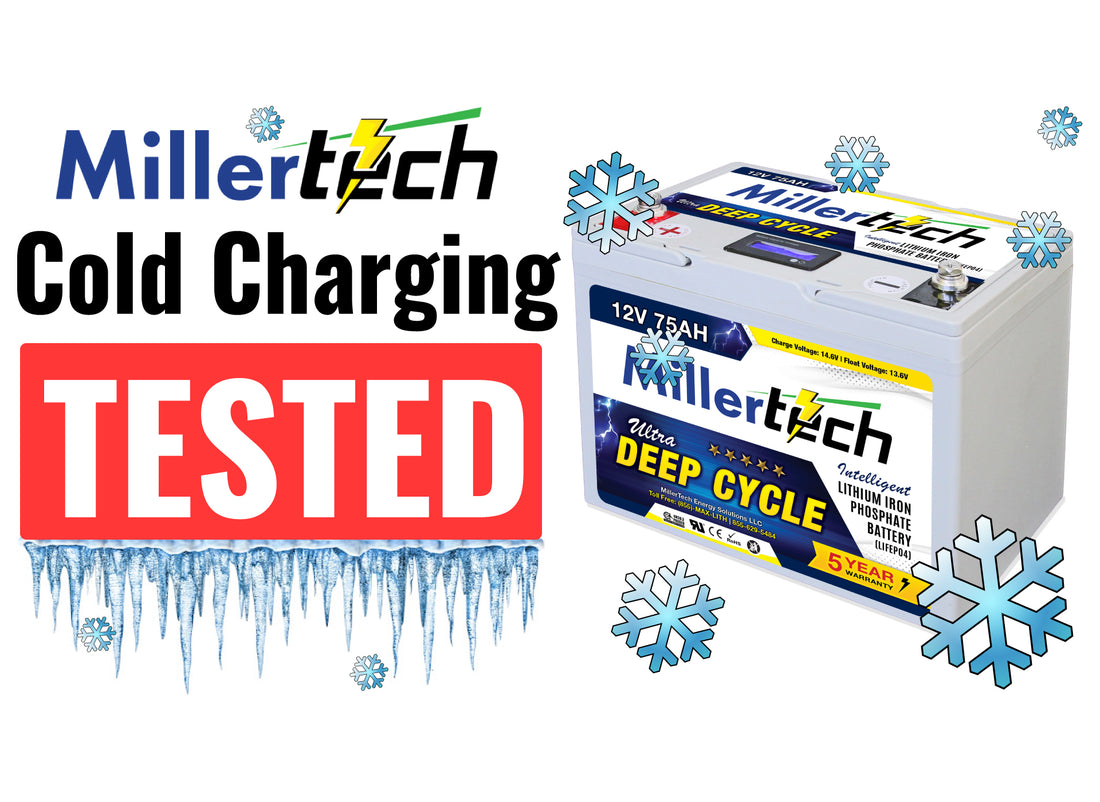As you may have heard while researching lithium batteries for your boat, RV, golf cart, or off-grid solar application, they don't like freezing temperatures. Not only will their output and capacity performance drop as it gets colder but if you try to charge them below freezing you can permanently damage the lithium cells.
So what can you do to protect your investment? Here are 4 things you should consider:
1. Don't take the manufacturer's word - do your own testing if you already own the batteries or try to find someone that posted a Youtube video, forum post, or other independent (hopefully) test of your chosen battery in the cold. Look for testing that actually puts the battery in freezing temperatures, such as a freezer or outside in the winter, and then tries to apply a charger to the battery.
I wouldn't trust tests that try to fake the battery management system (BMS) into thinking it is cold. Why? Because the temperature sensor on the BMS may not take measurements in real time so sticking the probe in freezing water for a few seconds may not cut it.
I have personally seen lithium battery manufacturer's claim cold charging protection on their batteries when the batteries do not even use a BMS with a microcontroller capable of providing cold charging protection. So trust but verify!
Here is an example of a proper test:
2. Remember the only thing that matters is internal temperature - the ambient temperature outside your house, RV, cabin, boat or wherever your batteries are located doesn't matter. The internal temperature of the battery matters. So just because the outside air is 32F doesn't mean you are necessarily in the danger zone. If you take steps to insulate your batteries then they will operate just fine.
Obviously, if you can keep the batteries indoors in a heated environment then you never have to worry about them.
If indoors isn't an option, I would recommend a sealed, insulated box for your batteries. It doesn't have to be air tight but the tighter the better. Wrap the batteries in insulation, a blanket, or whatever may keep them slightly warmer than outside temperatures. If you can bury the box in the ground that is ideal as the ground rarely, if ever, freezes unless you live in areas with permafrost.
3. Use a heating mat - heating mats designed for seed starting (gardening) or reptiles are perfect to apply a small amount of heat under your batteries to prevent any possibility of damage. Leave them plugged in all the time and they will consume 10-20W or so depending on how big the mat is. Or just plug the mat in when the forecast calls for freezing temperatures to save on energy.
4. Buy a battery with an internal heater - more and more lithium batteries have internal heating elements that will kick on when a charger is connected AND when the temperature is below freezing. Once the battery warms up to above freezing then the charging process is allowed to begin. Look for a model that is plug and play and does not use jumpers or other manual efforts to enable the heating. Also make sure that the heating element is not drawing power from the battery itself but takes its energy from the charging source.
With some common sense precautions or preventive measures you can easily protect your lithium battery investment from damage due to charging in cold temperatures!

